The Ultimate Guide to Labrador Retriever Care and Training
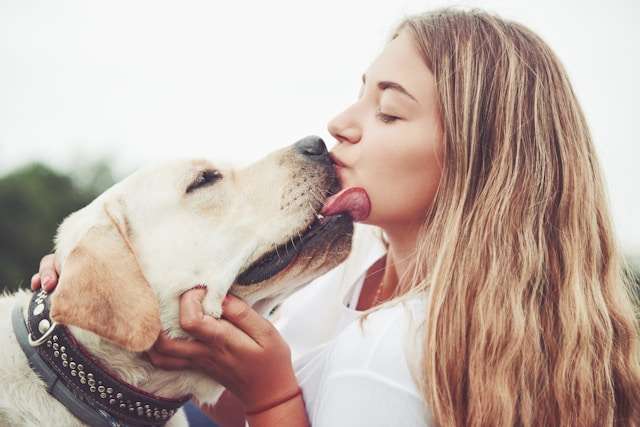
My decade-long experience as a dog trainer has introduced me to countless breeds. The Labrador Retriever stands out and holds a special place in my heart. These intelligent, friendly, and energetic dogs remain America’s most popular breed, and with good reason.
The Labrador Retriever’s excellent temperament and exceptional personality traits make them stand out. Their gentle nature with children and eagerness to please are well-known traits. But a loving disposition alone isn’t enough when bringing one into your home. These dogs need specific care, training, and attention to flourish.
Let me share a complete guide about raising a healthy Labrador Retriever. The guide covers everything about Lab ownership that current and future owners should understand, including training techniques, grooming routines, and behavioral management to help your Lab thrive.
Table of Contents
Understanding Your Labrador’s Physical Needs
Look closer at your Labrador Retriever’s physical needs, which are the foundations of their overall well-being. My years of experience working with Labs show that meeting these needs properly can prevent many everyday health and behavioral problems.
Exercise Requirements by Age
Providing appropriate exercise is vital to Labrador care. A healthy adult Labrador needs at least 80 minutes of high-quality exercise daily [1]. Exercise needs change substantially with age.
Playtime around the house provides enough exercise for puppies up to three months old. You can begin structured walks after three months and gradually increase the duration as they grow [1]. These exercise guidelines have proven effective:
- Puppy (3-12 months): Follow the 5-minute rule – 5 minutes of exercise per month of age [2]
- Adult (1-7 years): 80 minutes of varied activity daily [1]
- Senior (8+ years): Gentle exercise with a focus on low-impact activities like swimming [2]
Nutrition and Diet Guidelines
Labs are famous food enthusiasts, which makes proper nutrition vital. They need twice-daily feedings, morning and evening [3]. These nutrition guidelines work best:
- Puppy Stage: Feed high-quality puppy formula until 12 months [3]
- Adult Stage: Switch to large-breed adult formula after first year [3]
- Senior Stage: Adjust to higher fiber, lower calorie diet [4]
Note that Labradors can quickly become overweight, so portion control matters. Slow-feeder bowls are great if your Lab eats too quickly [3].
Health Monitoring Essentials
Regular health monitoring helps catch potential issues early. My work with hundreds of Labs shows that preventive care substantially improves their quality of life.
Regular veterinary check-ups are needed for vaccinations, parasite control, and dental care [5]. Weight and joint health require special attention since Labs often develop obesity-related issues. During these visits, your vet can spot early signs of common Labrador health concerns.
Pro Tip: A health journal that tracks your Lab’s weight, exercise tolerance, and eating habits is a great way to get helpful information during vet visits and helps identify concerning trends.
Mastering Basic Labrador Training
My career as a dog trainer has given me unique experiences, and training a Labrador Retriever stands out as one of the most rewarding. Years of hands-on work have taught me that success comes from understanding the simple principles of positive reinforcement and steady practice.
Positive Reinforcement Techniques
Positive reinforcement goes beyond treats—rewards that matter to your Lab strengthen behaviors [6]. My training sessions show that reinforcement can be anything your dog values, including praise, belly rubs, or their favorite toy [7].
Your training will work when you nail the timing and stay consistent. A marker (like a clicker or verbal cue) helps pinpoint the exact moment your Lab does what you want [6]. This transparent communication shows your Lab precisely what earned them the reward.
Essential Commands and Cues
My well-laid-out approach has helped countless Labs master their basic commands. Short training sessions of 5-10 minutes work best and should always end positively [7].
Here’s my proven sequence to teach essential commands:
- Start Silent: Get the behavior first, without verbal cues [8]
- Add Hand Signals: Use consistent hand movements [8]
- Include Verbal Cues: Add verbal commands once the behavior sticks [8]
Dogs need to learn to value praise. At first, your Lab will see “Good dog!” as its own reward when you pair it with treats [7].
Addressing Common Training Challenges
Training hiccups usually occur because of inconsistent or unclear communication. Your Lab might not respond as expected if it doesn’t understand what you’re asking [9].
Mixed messages create confusion. For example, how using a happy voice when frustrated can throw your Lab off [9]. Clear, consistent communication through voice and body language makes all the difference.
Pro Tip: Labs are place-oriented. They might follow commands perfectly inside but struggle outdoors [9]—practice commands in different spots and situations to build their understanding.
Training focuses on progress, not perfection. Labs can transform incredibly when owners commit to regular, short sessions and stay patient throughout [10].
Establishing a Grooming Routine
My work with dogs has taught me a lot about Labrador Retrievers. Setting up the proper grooming routine does more than keep them clean. It helps their health and gives you a chance to bond with them.
Coat Care and Maintenance
Your Lab’s distinctive double coat needs special care. It has two layers: a water-resistant top layer and a dense, warm undercoat [11]. Regular upkeep is needed to keep this unique combination healthy and manageable.
These tools are essential for good coat care:
- A wide-tooth metal comb
- Quality slicker brush
- Detangling spray
- Thick, absorbent towels
Brushing 2-3 times weekly works well during regular shedding periods [12]. Daily brushing becomes necessary during heavy shedding seasons to handle all the fur loss [13].
Dental and Nail Care
Most pet owners overlook dental care, but it’s vital. Studies show that most dogs have signs of dental disease by age three [14]. Brush your dog’s teeth daily with canine-specific toothpaste. Never use human toothpaste—it can harm your dog [15].
Nail care follows a simple rule: clicking sounds on the floor means it’s trimming time [13]. Plan for nail maintenance every 3-4 weeks [13]. This timing might change based on how active your Lab is and where they usually walk.
Bathing and Cleaning Schedule
Experience has helped me develop a good bathing routine. Indoor Labs do well with baths every four to six weeks [13], while active outdoor Labs might need more frequent baths [16].
Necessary: Too much bathing strips essential oils from your Lab’s coat [16]. Stick to dog-specific shampoo since human products can damage their natural coat protection [17]. Make sure you rinse thoroughly after each bath. Soap left behind can irritate their skin [11].
Grooming wipes work great between baths for quick clean-ups, especially for paws and messy spots [11]. They keep dogs clean without disturbing their coats’ natural oils.
Each grooming session lets you check for unusual lumps, skin problems, or other health concerns [13]. I always do these quick health checks while grooming.
Managing Behavioral Challenges
Managing a Labrador’s behavioral challenges takes understanding, patience, and consistent training. Working with these fantastic dogs has taught me several strategies that work well for their most common behavioral issues.
Dealing with Excessive Energy
My experience with Energetic Labs shows that managing their enthusiasm requires more than physical exercise. Dogs develop destructive behaviors when they don’t get enough mental and physical stimulation [18]. The best way to manage their energy includes:
- Morning exercise sessions
- Interactive puzzle toys during the day
- Training sessions between activities
- Evening cool-down routines
- Structured playtime with other dogs
A tired Labrador usually behaves well. Most Labs need up to two hours of daily activity [19], based on age and energy level.
Preventing Destructive Behavior
Destructive behavior usually comes from boredom or excess energy. Adult dogs become destructive mainly due to under-stimulation [20]. Environmental management and proper training have helped many Lab owners solve this problem.
Kong toys and puzzle feeders keep your Lab’s mind busy while you’re away [21]. Proper crate training creates a safe space that prevents destructive behavior when you can’t supervise them [21].
Addressing Food Obsession
Labs often obsess over food for scientific reasons. About one in five Labradors has a specific gene mutation that affects their appetite control [22], which explains their constant hunger!
These strategies help manage their food obsession:
Structured Feeding: Careful portion control and scheduled mealtimes [23] reduce obesity and begging behavior.
Food-Based Training: Their food motivation makes training more accessible. Labs chosen for assistance work often carry this food-obsessed gene [22], which enhances their trainability.
Environmental Management: Food stays out of reach, and slow-feeder bowls prevent rapid eating [23]. This simple change helps control food-related behaviors.
These challenges become opportunities to build stronger bonds with your Lab. The right approach and consistency make a big difference. Regular exercise, mental stimulation, and structured routines have helped many Lab owners create better relationships with their pets.
Creating the Perfect Environment
Setting up the perfect living space for your Labrador retriever ranks among the top consulting topics with new Lab owners. Experience shows that the right environment prevents many common behavioral issues before they start.
Setting Up Your Home
A Labrador needs designated spaces in your home setup. Labs need enough room to move around comfortably, and research shows they need at least 6 inches of clearance above their head in any enclosed space [24]. Your home should include three distinct areas:
- A comfortable sleeping area away from drafts
- A designated feeding station with non-slip flooring
- A quiet retreat space for relaxation
Pro Tip: Multiple water bowls placed strategically prevent your Lab from getting dehydrated during play sessions.
Outdoor Space Requirements
Labs can adapt to various living situations but thrive with adequate outdoor space. A secure yard needs a fence height of at least six feet to prevent jumping or climbing [25].
Urban dog parents can create enriching outdoor experiences even without a yard. Daily walks and regular visits to dog parks make up for limited living space [26]. Keep in mind that Labs should never stay unsupervised outdoors [27].
Safety Considerations
Critical safety measures benefit every Lab owner. Store all cleaning supplies and medications in high cabinets or locked storage [28]. Curious Labs often get into trouble with chemicals left within reach.
Cord concealers or heavy-duty cable protectors enhance electrical safety [25]. Childproof latches on lower cabinets containing hazardous materials add an extra layer of protection [28].
Temperature Control: Shade in outdoor areas matters greatly, especially for black-coated Labradors who overheat easily [25]. Your Lab needs access to cool, shaded areas during outdoor time.
Key areas need puppy-proofing:
- Kitchen: Install pet-safe trash containers with locking mechanisms [28]
- Living Room: Block fireplace access and secure loose wires [28]
- Bathroom: Keep toilet lids closed and store cleaning supplies securely [28]
Labs possess natural curiosity and energy. A well-planned environment keeps them safe and provides the mental stimulation they need to stay happy and active.
Building Social Skills
A well-adjusted Labrador retriever needs proper socialization. My extensive work with Labs has taught me that 6 to 24 weeks shapes their development significantly [29]. Let me share what I’ve learned about building vital social skills in these fantastic dogs.
Interaction with Other Dogs
My years of experience show that good dog-to-dog socialization prevents future behavior problems. Labs need controlled exposure to other dogs during their early development. If they don’t socialize with other dogs by 16 weeks, they can develop timidity or aggression [29].
These steps work best for dog interactions:
- Start with calm, vaccinated dogs
- Keep original meetings brief and positive
- Allow natural nose-to-rear greetings
- Monitor body language closely
- End interactions before either dog becomes overwhelmed
Family Integration Strategies
Labs make exceptional family dogs. Their gentle and tolerant temperament works excellently with children [30]. Yet this natural disposition needs the right nurturing.
Proper family integration creates positive associations. Your puppy should meet at least 100 different people in their first 100 days [29]. This exposure helps develop the friendly personality that everyone loves.
Important: Children and Labs need supervision during their interactions. Both need to learn the right way to play together, and even the most gentle Lab needs guidance about appropriate play behavior.
Public Behavior Training
Lab owners often struggle with public behavior training. My systematic approach has shown consistent results. Your Lab should be relaxed before you start public training—never begin when it’s full of energy [31].
This strategy works for public training:
- Start with short, 5-minute visits to build confidence
- Position your Lab in less trafficked areas at first
- Practice simple commands in increasingly distracting environments
- Always have a backup plan ready
The fear imprint period (8-16 weeks) sets the foundation for good public behavior [29]. During this time, your lab needs positive experiences with different environmental elements, from shopping carts to street traffic.
Your Lab must focus on you despite distractions. This skill could save their life someday [32]. Positive reinforcement and consistent training help Labs develop confidence. They’ll learn to handle any social situation calmly and safely.
Conclusion
My work with Labradors over the last several years has taught me that successful Lab ownership demands attention to several essential areas. Labs need proper exercise and nutrition, consistent training routines, regular grooming, and behavioral management. They also need safe environments and social skills to become well-adjusted companions.
Labs flourish when owners understand and meet these needs. The responsibilities might initially feel daunting, but raising a happy, healthy Labrador brings rewards that are nowhere near the challenges. These dogs respond exceptionally well to structured care and training, which makes them outstanding family pets.
Note that each Labrador has its personality and needs. You should implement these guidelines and adjust them to your Lab’s requirements. Your complete care will deepen your commitment and help your Labrador become the excellent companion these beautiful dogs were meant to be.
FAQs
- How trainable are Labrador Retrievers? Labrador Retrievers are highly trainable dogs. They are eager to please and quick learners, making them excellent students. While house training may require effort, Labs can start learning basic obedience and tricks when arriving in their new homes. Consistent positive reinforcement techniques and patience are essential to successful training.
- What’s an ideal daily routine for a Labrador Retriever? A perfect routine includes three long walks per day to meet their exercise needs. Labs also love playing fetch, so incorporating games with retrievable toys like tennis balls is beneficial. During summer, weekly brushing is recommended to remove loose hair from their coat. Remember to adjust the routine based on your Lab’s age and energy level.
- Are Labrador Retrievers high-maintenance dogs? While Labradors aren’t considered highly high-maintenance, they do require regular care. Their double coat sheds significantly, necessitating daily brushing, especially during shedding seasons. They also need substantial exercise and mental stimulation to prevent behavioral issues. However, their grooming needs are relatively straightforward compared to some other breeds.
- What are the primary care requirements for a Labrador Retriever? Labrador Retrievers require consistent exercise, mental stimulation, and attention due to their high energy levels and social nature. Key care aspects include:
- Regular exercise (at least 80 minutes daily for adults)
- Proper nutrition and portion control to prevent obesity
- Consistent training and socialization
- Regular grooming, including brushing and nail care
- Routine health check-ups and preventive care
- What should I know before getting a Labrador puppy? Before getting a Labrador puppy, consider the following:
- They have high energy levels and require plenty of exercise
- Early socialization and training are crucial for developing good behavior
- They shed considerably and need regular grooming
- Labs are food-motivated and prone to obesity, so proper diet management is essential
- They thrive on human interaction and may not do well if left alone for long periods
- Prepare your home for a curious and energetic puppy by puppy-proofing
- How can I manage my Labrador’s shedding? To manage your Labrador’s shedding:
- Brush your Lab 2-3 times weekly during regular periods and daily during heavy shedding seasons
- Use appropriate grooming tools like a slicker brush and wide-tooth metal comb
- Consider using a de-shedding tool during heavy shedding periods
- Maintain a healthy diet to promote coat health
- Regular bathing (every 4-6 weeks) can help remove loose fur
- What are common behavioral challenges with Labradors, and how can I address them? Common behavioral challenges in Labradors include excessive energy, destructive behavior, and food obsession. To address these:
- Ensure adequate daily exercise and mental stimulation
- Provide appropriate chew toys and puzzle feeders to prevent destructive behavior
- Use structured feeding times and measured portions to manage food obsession
- Implement consistent training using positive reinforcement techniques
- Consider crate training for times when supervision isn’t possible
- How do I socialize my Labrador Retriever properly? To properly socialize your Labrador Retriever:
- Start early, ideally between 6-24 weeks of age
- Expose them to various people, animals, environments, and situations
- Ensure positive experiences during these interactions
- Gradually introduce them to other dogs in controlled settings
- Supervise interactions with children and teach proper handling
- Practice basic obedience in increasingly distracting environments
- Aim for at least 100 positive interactions with different people in their first 100 days
References
[1] – https://www.pitpat.com/exercise/how-much-exercise-does-a-labrador-need/?srsltid=AfmBOopkpBF-SGmrhtCXl2aKB_F_50Oo5B2fViOyi2KQPHOkgqy0thaI
[2] – https://www.adaptil.co.uk/blogs/news/a-guide-to-exercising-your-labrador?srsltid=AfmBOoo1KW86lktGz8TOaQbplGSX8mqZnZn8w4tcrqIAYI_H1ryGY0fM
[3] – https://www.petmd.com/dog/breeds/labrador-retriever
[4] – https://www.hypropremium.com.au/labrador-feeding-guide/
[5] – https://eatneobites.com/blogs/dog-health-and-nutrition/longevity-for-labrador-retrievers?srsltid=AfmBOooRAL9ZXIFFeVlbJFH_ZJq9HVQ9PbOJBCwhm7Fk7zMQGTna7K_A
[6] – https://www.petmd.com/dog/behavior/how-to-train-a-dog-with-positive-reinforcement
[7] – https://www.akc.org/expert-advice/training/teach-your-puppy-these-5-basic-commands/
[8] – https://bestfriends.org/pet-care-resources/top-5-basic-dog-commands
[9] – https://ottertailkennels.com/train-labrador-retriever/
[10] – https://www.thelabradorsite.com/training-and-behavior/
[11] – https://brooklynpetspa.com/how-to-groom-a-labrador-retriever-basics-you-need-to-know/
[12] – https://www.dogster.com/dog-health-care/how-to-groom-labradors
[13] – https://www.akc.org/expert-advice/health/how-to-groom-a-labrador-retriever/
[14] – https://www.akc.org/expert-advice/health/keep-dog-teeth-clean/
[15] – https://www.kodalihartlabradors.com.au/care-health/grooming
[16] – https://www.snowypineswhitelabs.com/blog/how-often-should-you-bathe-a-lab/
[17] – https://prideandgroom.com/blogs/dog-grooming-tips-blog/labrador-grooming-guide?srsltid=AfmBOoqtE459J7IgL-l7jRugRx__h7HtqErBGjv90bM7qyRg5py5ljRl
[18] – https://www.3lostdogs.com/how-to-live-with-a-high-energy-dog-without-losing-your-mind/
[19] – https://www.rover.com/blog/surprising-ways-to-handle-high-energy-dogs-in/
[20] – https://www.blueridgehumane.org/chewing-and-dog-reactive-training-tips/
[21] – https://tlcpethospital.net/ten-tips-to-discourage-destructive-behavior-in-dogs/
[22] – https://www.wisdompanel.com/en-us/blog/food-obsession-in-dogs
[23] – https://www.thelabradorsite.com/why-are-labradors-always-hungry/
[24] – https://www.aphis.usda.gov/sites/default/files/minimum-space-requirements-for-dogs.pdf
[25] – https://justbigdogs.com/how-to-labrador-proof-your-yard-and-home/?srsltid=AfmBOoqjGIzi0HKlrofAIuUmbxX7HFlr0cqcWueu9BSj2EJhhmKeqW0P
[26] – https://www.hotdogsgrooming.co.za/do-labradors-need-a-lot-of-space/
[27] – https://www.cincinnatilabrescue.org/10-safety-tips-for-when-your-dog-is-home-alone/
[28] – https://www.dailypaws.com/living-with-pets/pet-friendly-home/dog-proofing-your-home-and-yard
[29] – https://www.pawlinglabs.com/fear-imprint-socialization
[30] – https://www.invoxia.com/blog/petcare/dog-breed-labrador-retriever/
[31] – https://www.akcpetinsurance.com/blog/train-your-dog-to-behave-in-public
[32] – https://www.akc.org/expert-advice/training/service-dog-training-101/

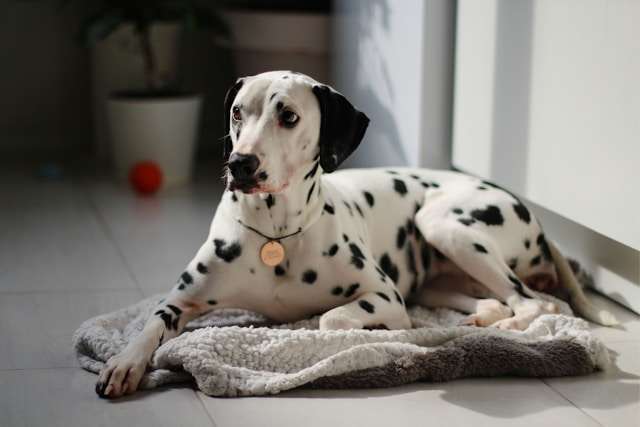
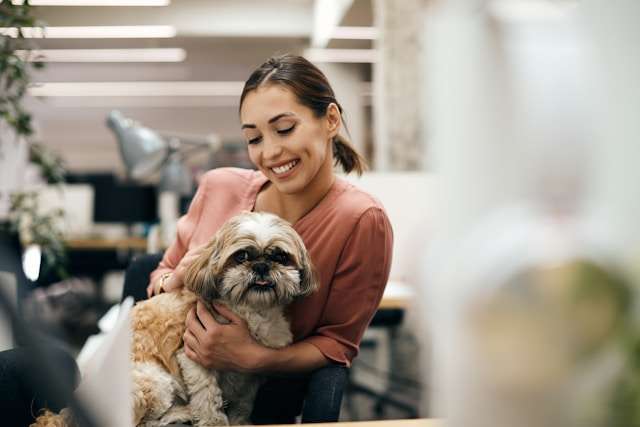
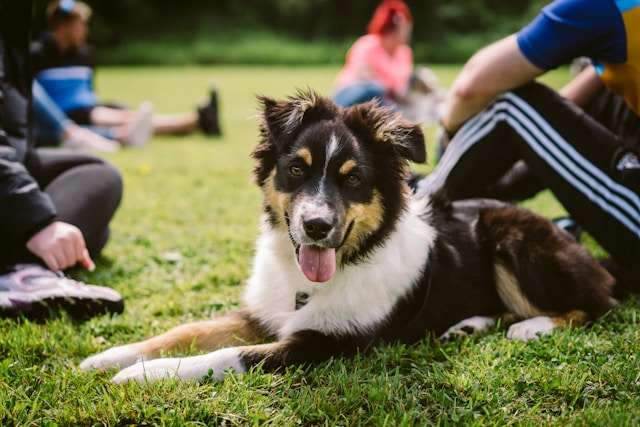
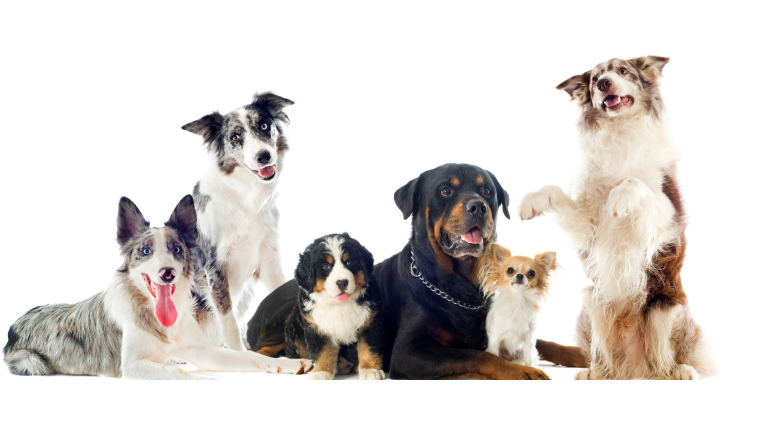


6 Comments